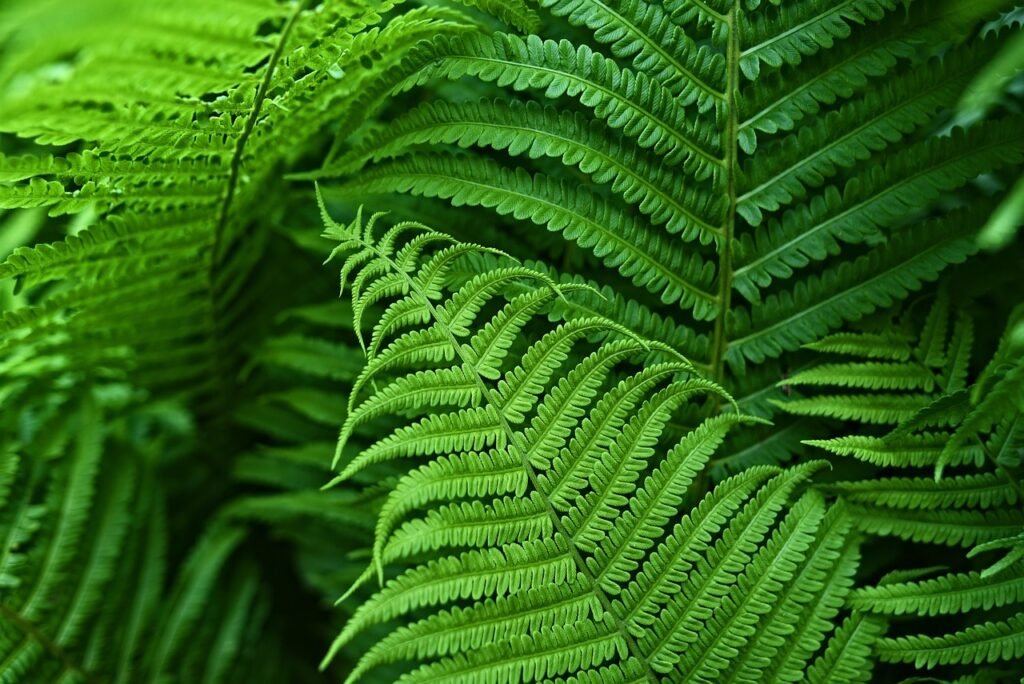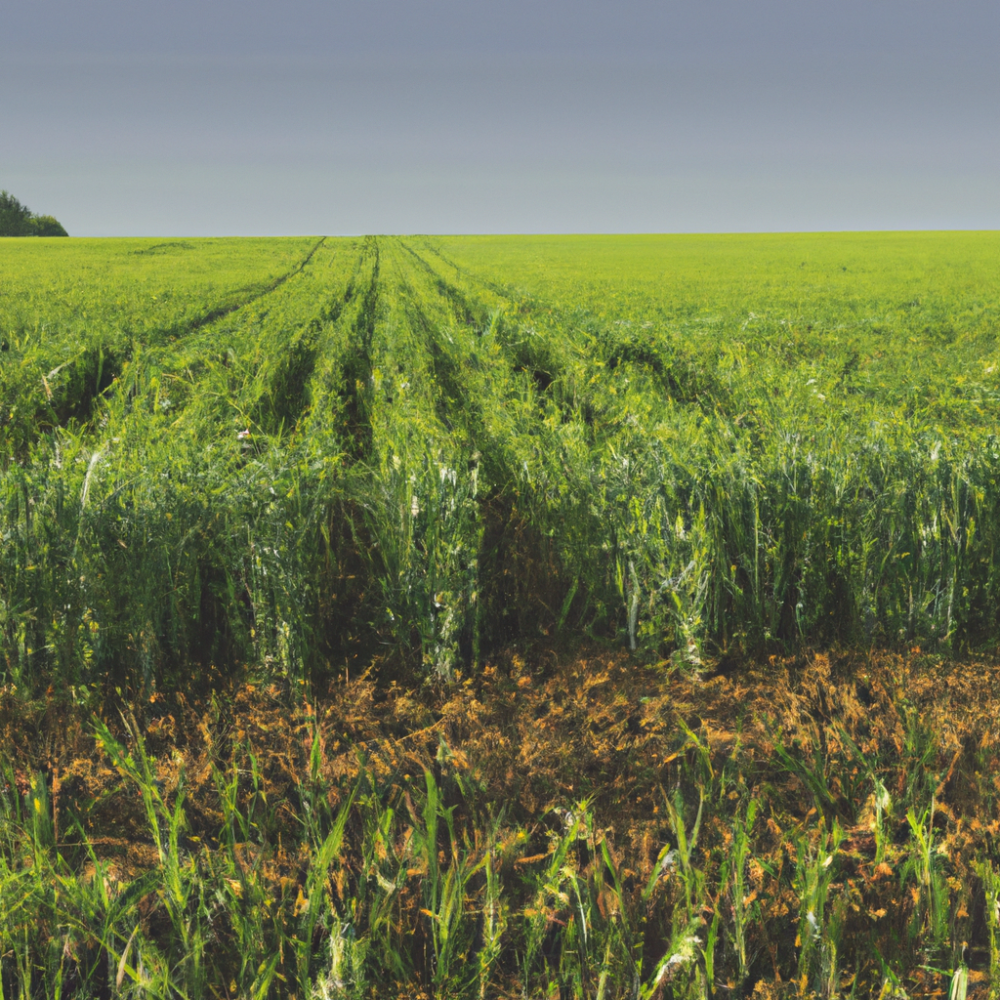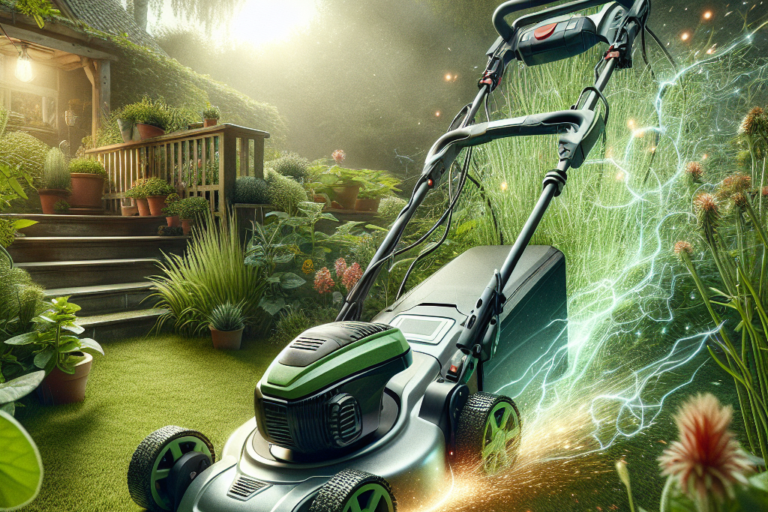If you’ve ever found yourself wondering about the best lawn fertilizer for your plants and when to use it, you’re not alone. As a gardener, you want to provide optimal care for your plants to ensure their health and growth. But with so many options available, it can be overwhelming to determine the right type of fertilizer and the ideal time for its application. In this article, we will explore the different types of fertilizers and guide you on when to use them, helping you make the best choices for your garden.
Types of Lawn Fertilizers
When it comes to fertilizers, there are several options available to you. Here are the main types of fertilizers commonly used in gardening:
Organic Fertilizers
Organic fertilizers are derived from natural sources such as plant and animal materials. They are rich in organic matter and slowly release nutrients into the soil. Some common examples of organic fertilizers include compost, manure, bone meal, fish emulsion, and seaweed extract. These types of fertilizers are great for improving soil health and long-term nutrient availability.
Inorganic Fertilizers
Inorganic fertilizers, also known as synthetic or chemical fertilizers, are manufactured using chemicals. They are formulated to provide plants with specific nutrient ratios. Inorganic fertilizers are typically fast-acting and provide immediate nutrition to plants. The main types of inorganic fertilizers include nitrogen-based, phosphorus-based, potassium-based, and multi-nutrient fertilizers.
Slow-release Fertilizers
Slow-release fertilizers are designed to gradually release nutrients over an extended period. These fertilizers are often coated or encapsulated, allowing for a controlled release of nutrients in response to moisture and temperature. Slow-release fertilizers are beneficial for reducing nutrient leaching and ensuring a steady supply of nutrients to plants. They are especially useful for container gardening or in situations where frequent fertilization is not feasible.
Liquid Fertilizers
Liquid fertilizers are available in a liquid form and are easily soluble in water. They can be applied directly to the soil or through foliar feeding, where the fertilizer is sprayed on the leaves of plants. Liquid fertilizers provide plants with quick nutrient absorption and are a convenient option for both indoor and outdoor gardening. They are often used for rapid nutrient correction and are easily customizable based on the specific needs of plants.
Granular Fertilizers
Granular fertilizers come in a solid form, typically in the form of pellets or granules. These fertilizers are easy to apply and suitable for larger areas. Granular fertilizers slowly release nutrients as they break down, providing sustained nutrition to plants over time. They are commonly used for lawns, gardens, and agricultural crops.
Factors to Consider
When deciding what type of fertilizer to use and when to apply it, several factors should be taken into consideration. These factors will help you determine the best fertilizer for your specific gardening needs:
Soil Type
Understanding your soil type is crucial for identifying its nutrient content and deficiencies. Conducting a soil test will provide valuable insights into the pH level and nutrient composition of your soil. Certain fertilizers are formulated to address specific soil deficiencies, so knowing your soil type will guide you in choosing the right type of fertilizer.
Plant’s Nutritional Needs
Different plants have varying nutrient requirements. Some plants may need more nitrogen, while others may require additional phosphorus or potassium. Research the specific nutritional needs of the plants you are growing to select a fertilizer that matches those requirements. This will help you provide the necessary nutrients for optimal plant growth and development.
Environmental Factors
Consider the environmental conditions around your garden, such as temperature, humidity, and sunlight exposure. Some fertilizers are more effective in specific environmental conditions. Additionally, factors like rainfall patterns and water availability should be considered, as they affect the rate of nutrient absorption and leaching.
Budget and Convenience
Your budget and convenience should also play a role in your fertilizer selection. Organic fertilizers, for example, may be more expensive than inorganic fertilizers, but they offer long-term benefits for soil health. Liquid fertilizers offer quick nutrient absorption, but they may require more frequent applications. Consider your budget and how often you are willing or able to apply fertilizer when making your decision.
Now, let’s dive deeper into each of the fertilizer types:

Organic Lawn Fertilizers
Organic fertilizers are derived from natural sources and are rich in organic matter. They contribute to the overall health of the soil and provide a slow release of nutrients. Here are some common examples of organic fertilizers:
Compost
Compost is made from decomposed organic matter such as kitchen scraps, leaves, and grass clippings. It enriches the soil with essential nutrients, improves soil structure, and enhances water retention. Compost can be used as a top dressing or mixed into the soil before planting.
Manure
Animal manure, such as cow, horse, or chicken manure, is a nutrient-rich organic fertilizer. It is a valuable source of nitrogen, phosphorus, and potassium. However, it should be well-aged or composted before use to avoid burning plants with excessive nutrients or pathogens.
Bone Meal
Bone meal is made from ground-up animal bones and is an excellent source of phosphorus and calcium. It promotes strong root development and helps plants flower and fruit. Bone meal is particularly beneficial for plants like roses, bulbs, and fruit trees.
Fish Emulsion
Fish emulsion is a liquid fertilizer made from fish waste or whole fish. It is rich in nitrogen, phosphorus, and trace minerals. Fish emulsion is easily absorbed by plants and stimulates healthy growth. It is often used as a foliar spray or drenched into the soil.
Seaweed Extract
Seaweed extract is derived from seaweed and contains a wide range of beneficial nutrients, including trace minerals, vitamins, and growth hormones. It enhances plant growth, increases tolerance to environmental stress, and improves overall plant health. Seaweed extract can be applied as a foliar spray or mixed into the soil.
Inorganic Fertilizers
Inorganic fertilizers, also known as synthetic or chemical fertilizers, are manufactured using chemicals. They provide an immediate release of nutrients and are formulated to meet specific plant needs. Here are the main types of inorganic fertilizers:
Nitrogen-based Fertilizers
Nitrogen-based fertilizers are high in nitrogen content, which stimulates vegetative growth. They are especially useful for promoting leafy green plants, lawns, and crops requiring lush foliage. Some examples include ammonium nitrate, urea, and ammonium sulfate.
Phosphorus-based Fertilizers
Phosphorus-based fertilizers contain high levels of phosphorus, which supports root development and flowering. They are beneficial for plants needing strong root systems and abundant blooms. Superphosphate and bone meal are common phosphorus-based fertilizers.
Potassium-based Fertilizers
Potassium-based fertilizers are rich in potassium, an essential nutrient for overall plant health, disease resistance, and fruit development. They help plants withstand stress and improve quality and yield. Potassium sulfate and potassium chloride are commonly used potassium-based fertilizers.
Multi-nutrient Fertilizers
Multi-nutrient fertilizers contain a balanced blend of nitrogen, phosphorus, potassium, and sometimes other essential nutrients. They provide a comprehensive nutrient package suited for a range of plants and are often used as general-purpose fertilizers.

Slow-release Fertilizers
Slow-release fertilizers, as the name suggests, release nutrients gradually over time. This slow-release mechanism ensures a steady supply of nutrients to the plants. Here are some benefits and application methods of slow-release fertilizers:
Benefits and Mechanism
One of the main advantages of slow-release fertilizers is that they reduce the risk of nutrient leaching, as they release nutrients gradually. This helps prevent excessive nutrient runoff that can harm the environment. Slow-release fertilizers also provide a continuous supply of nutrients, reducing the need for frequent applications.
The mechanism of slow-release fertilizers involves a controlled release of nutrients in response to moisture and temperature. The fertilizer granules or pellets contain a coating or encapsulation that breaks down over time. As water penetrates the coating, nutrients are released, providing a sustained nutrient supply to the plants.
Application Methods
Slow-release fertilizers can be applied to the soil in various ways. They can be incorporated into the soil during planting or top-dressed around existing plants. Depending on the specific fertilizer, application rates and timing may vary. Always follow the manufacturer’s instructions for the best results.
Liquid Fertilizers
Liquid fertilizers are a popular choice among gardeners due to their quick nutrient absorption and ease of application. They come in various forms and offer advantages as well as disadvantages. Let’s explore them in more detail:
Types of Liquid Fertilizers
Liquid fertilizers are available in different formulations, each serving a specific purpose. Some common types include:
- All-purpose liquid fertilizers: These provide a balanced mix of nutrients and are suitable for most plants.
- Foliar fertilizers: These are specifically designed for foliar feeding, where the fertilizer is applied directly to the leaves.
- Liquid organic fertilizers: Made from organic materials, these fertilizers are suitable for those looking for organic gardening options.
- Liquid seaweed extract: Derived from seaweed, this type of liquid fertilizer provides a range of nutrients and growth-promoting substances.
Advantages and Disadvantages
Liquid fertilizers offer several advantages. First, they provide immediate nutrient uptake by plants since they are already in a soluble form. This is especially beneficial for plants with nutrient deficiencies or those that require quick nutrient correction. Liquid fertilizers are also highly customizable, allowing you to adjust the nutrient composition based on your plant’s needs.
However, one disadvantage of liquid fertilizers is that they may require more frequent applications compared to other types of fertilizers. The nutrients in liquid fertilizers can be quickly leached away by heavy rainfall or extensive irrigation. Additionally, liquid fertilizers may be more expensive in the long run compared to other fertilizer options.
Application Techniques
Liquid fertilizers can be applied directly to the soil or used for foliar feeding. When applying to the soil, follow the manufacturer’s instructions for the appropriate dilution rates and apply evenly around the base of the plants. For foliar feeding, dilute the liquid fertilizer according to the instructions and thoroughly spray both sides of the leaves. Avoid applying during the hottest part of the day to prevent leaf burn.

Granular Fertilizers
Granular fertilizers come in a solid form, usually as pellets or granules. They are a popular choice for many gardeners due to their ease of application and suitability for larger areas. Understanding the types of granular fertilizers, their benefits, drawbacks, and application guidelines can help you make an informed decision:
Types of Granular Fertilizers
Granular fertilizers are available in a variety of formulations to address different plant needs. Some common types include:
- Nitrogen-based granular fertilizers: These are high in nitrogen content and are often used for promoting green, leafy growth.
- Phosphorus-based granular fertilizers: These contain higher levels of phosphorus to support root development and flowering.
- Potassium-based granular fertilizers: These are rich in potassium, beneficial for overall plant health and fruit development.
- Slow-release granular fertilizers: These release nutrients slowly over time, providing a consistent nutrient supply.
Benefits and Drawbacks
Granular fertilizers offer several benefits. They are easy to use, especially for larger areas, as they can be applied with a spreader or by hand. Granular fertilizers also provide a slow release of nutrients over a longer period, reducing the need for frequent applications. Additionally, they are less prone to leaching compared to liquid fertilizers.
However, one drawback of granular fertilizers is that they may take longer to show their effects compared to liquid fertilizers. The nutrients in granular fertilizers need time to break down and be absorbed by the plants’ roots. Granules may also be more visible on the soil surface, which may not be aesthetically pleasing in certain garden settings.
Application Guidelines
To apply granular fertilizers, follow the recommended application rates specified on the packaging. Using a spreader or by hand, evenly distribute the granules over the soil surface. Avoid applying granules directly on plant foliage, as this may cause leaf burn. After application, water the area thoroughly to activate the fertilizer and ensure proper nutrient absorption.
Best Time to Apply Lawn Fertilizer
Knowing the best time to apply fertilizer is essential for maximizing its effectiveness and promoting healthy plant growth. The timing will vary depending on the season and the specific needs of your plants. Here are some guidelines for applying fertilizer throughout the year:
Spring
Spring is an ideal time to apply fertilizer, as it supports the growth and development of plants after the dormant winter period. Apply a balanced fertilizer or a slow-release fertilizer to provide plants with the necessary nutrients for vigorous growth. Be mindful not to apply excessive nitrogen during this time, as it may result in excessive foliage growth at the expense of flowering and fruiting.
Fall
Fall is another crucial period for applying fertilizer. This application helps prepare plants for the winter and promotes root development and nutrient storage. Slow-release fertilizers are particularly beneficial during this time, as they provide a steady supply of nutrients for winter resilience. Focus on fertilizers with higher phosphorus content to support root growth and nutrient absorption.
Summer
In summer, it is generally best to reduce or avoid fertilizing. High temperatures and excessive fertilizer application can stress plants. However, if your plants show signs of nutrient deficiencies, you can use a liquid fertilizer to provide a quick nutrient boost. Apply the fertilizer in the early morning or evening to minimize the risk of leaf burn.
Winter
Winter is generally not the time for applying fertilizer to outdoor plants, as they are usually dormant during this period. However, for indoor plants, consider using a slow-release fertilizer to provide a consistent nutrient supply throughout the colder months. It is important to reduce watering during winter to prevent waterlogged soil and potential root damage.
Specific Crop Stages
Different crops have specific nutritional requirements at different stages of growth. For example, fruiting plants may benefit from fertilizing during their flowering and fruiting stages. Leafy greens may require nitrogen-rich fertilizers during their vegetative growth stage. Research the specific needs and growth stages of your plants to determine the best time and type of fertilizer to apply.

Soil Type Considerations
Understanding your soil type is crucial for determining its nutritional needs and amending it with the appropriate fertilizers. Here are some considerations when it comes to soil types:
Testing Soil Composition
Conducting a soil test is highly recommended to determine the nutrient composition and pH level of your soil. Soil testing kits are readily available and can provide insights into the levels of essential nutrients such as nitrogen, phosphorus, and potassium. By knowing your soil composition, you can make informed decisions about the type and amount of fertilizer needed.
Amending Soil with Fertilizer
Different soil types require different approaches to fertilizer application. Sandy soils, for example, tend to be well-draining but may lack essential nutrients. In this case, adding organic matter-based fertilizers or slow-release fertilizers can help improve soil fertility and water retention. Clay soils, on the other hand, may benefit from fertilizers that promote soil aeration and drainage.
pH Level Adjustment
The pH level of your soil influences nutrient availability to plants. Conducting a soil test will help determine if your soil is acidic, neutral, or alkaline. Different plants thrive in different pH ranges, so adjusting the soil pH to the appropriate level may be necessary. Use pH-adjusting fertilizers or soil amendments like lime or sulfur to modify the pH as needed.
Environmental Factors
Environmental factors play a significant role in the effectiveness and timing of fertilizer application. It’s important to consider these factors when determining the best approach for fertilizing your plants:
Weather Conditions
Weather conditions, such as temperature, humidity, and rainfall, can affect the absorption and availability of nutrients in the soil. In hot and dry conditions, for example, plants may require more frequent watering to facilitate nutrient uptake. Excessive rainfall can lead to nutrient leaching, requiring additional fertilizer application to replenish lost nutrients. Monitor weather patterns and adjust your fertilization schedule accordingly.
Watering Methods
The method and frequency of watering can impact fertilizer efficiency. Some fertilizers require incorporating them into the soil before watering, while others are activated by irrigation. Pay attention to the specific instructions provided by the manufacturer and water your plants appropriately to ensure nutrients are properly absorbed by the roots.
Erosion Control
Soil erosion can negatively impact nutrient availability in your garden. Heavy rainfall or improper irrigation practices can wash away topsoil and nutrients. Implement erosion control measures, such as mulching or contouring, to prevent soil runoff and nutrient loss. Additionally, adding organic matter to the soil can help improve its structure and reduce erosion.
In conclusion, choosing the right type of fertilizer and applying it at the appropriate time are key factors in ensuring healthy plant growth. Consider your soil type, the nutritional needs of your plants, environmental conditions, and your budget when making fertilizer decisions. Whether you opt for organic or inorganic fertilizers, slow-release or liquid fertilizers, or prefer granular options, understanding the benefits, drawbacks, and application guidelines will help you make the best choices for your garden. And remember, proper soil testing, amending soil composition, adjusting pH levels, and considering environmental factors will enhance the effectiveness of your fertilization efforts. Happy gardening!



